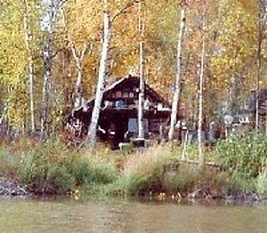Miles of Alaska Raw materials Info
Read my bio for more information about me.
|
Disclaimer notice. You should be responsible for knowing the laws in your area concerning my products. Many items like fossil ivory, wood, artifacts, knives, have restrictions that vary by location. I can not know all the rules in all the places and keep up with their changes. What I offer is legal where I am. You are responsible for knowing your local laws, not me, ok?
|

I sell a lot of fossil mammoth ivory to knife makers.
Here is the direct link to knife scales: fossil mammoth ivory knife scales |
General I specialize in Alaska materials. I find most myself along interior Alaska rivers. I find most but do buy or trade in Alaska from locals, mostly Athabaskan Indian. I wish to help support my Native friends and their lifestyle. Some materials I get in Tucson as a lifestyle change at the big gem mineral fossil shows. I do not get out into the wilds as much and am not in the animals parts business so changed how I acquire. I trade or buy, but for sure hand select everything. I buy nothing site unseen through the mail. Many customers feel all I provide has things in common, unique, good price, and rustic.
I advertise I sell a lifestyle and way if life. This is not just a line. This means to me, all material I find or acquire is cool, exciting and it does not have to be #1 grade or flawless. The world is imperfect, so am I, and so are most materials. I do not support waste, meaning tossing out half the material so I can offer 'the best.' No, I want to find a market for it all. I myself use damaged, off color . I tend to offer as close to nature as I can ,so my raw is not sanded well, lines off a tad, not squared up well. My prices reflect this. My shop time is $65 an hour. How much would you like to pay for? The less I do, the cheaper I can sell the material to you. If you want more work done, say so and I can double the price. On most materials and work if you are not happy, return for refund, as it is usually one of a kind and may not work for you.
I try to offer character unique one of a kind different that you do not find just anyplace, so I have a nitch market for those who feel as I do and like my taste and energy. I am a one person business live remote at the source and am one of the few who works material I sell, so understand most needs, can answer questions about use and requirements. I have a lot on YouTube video on how to, and sources in the wilds as provenance.
YouTube homepage
I advertise I sell a lifestyle and way if life. This is not just a line. This means to me, all material I find or acquire is cool, exciting and it does not have to be #1 grade or flawless. The world is imperfect, so am I, and so are most materials. I do not support waste, meaning tossing out half the material so I can offer 'the best.' No, I want to find a market for it all. I myself use damaged, off color . I tend to offer as close to nature as I can ,so my raw is not sanded well, lines off a tad, not squared up well. My prices reflect this. My shop time is $65 an hour. How much would you like to pay for? The less I do, the cheaper I can sell the material to you. If you want more work done, say so and I can double the price. On most materials and work if you are not happy, return for refund, as it is usually one of a kind and may not work for you.
I try to offer character unique one of a kind different that you do not find just anyplace, so I have a nitch market for those who feel as I do and like my taste and energy. I am a one person business live remote at the source and am one of the few who works material I sell, so understand most needs, can answer questions about use and requirements. I have a lot on YouTube video on how to, and sources in the wilds as provenance.
YouTube homepage